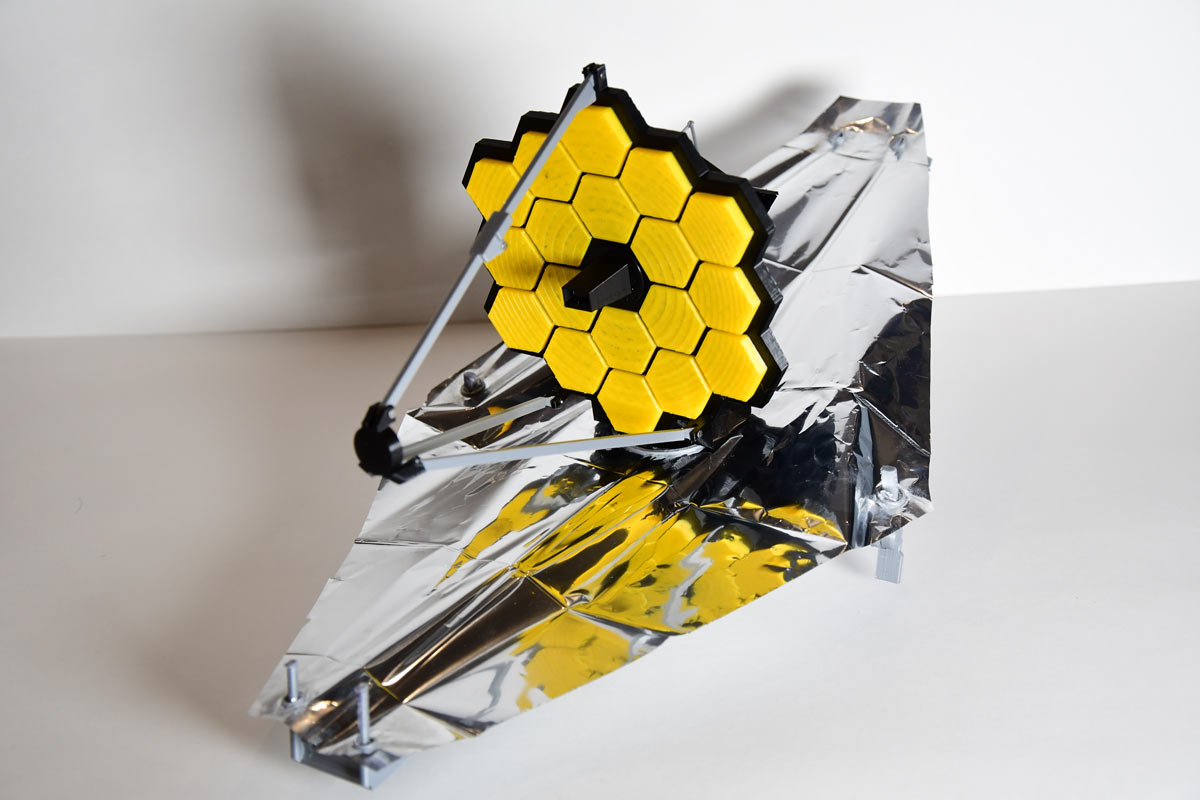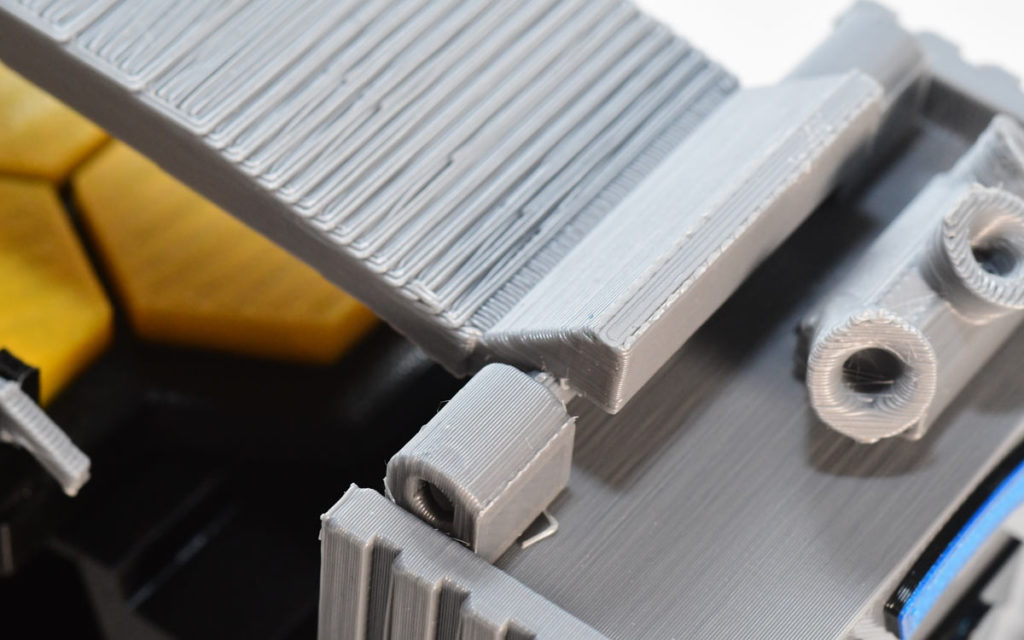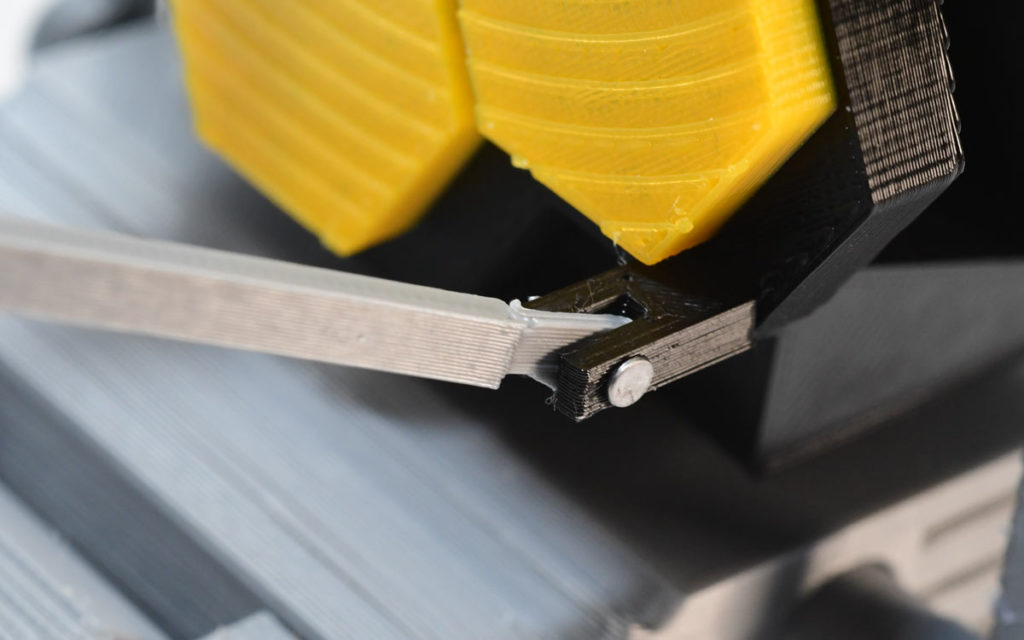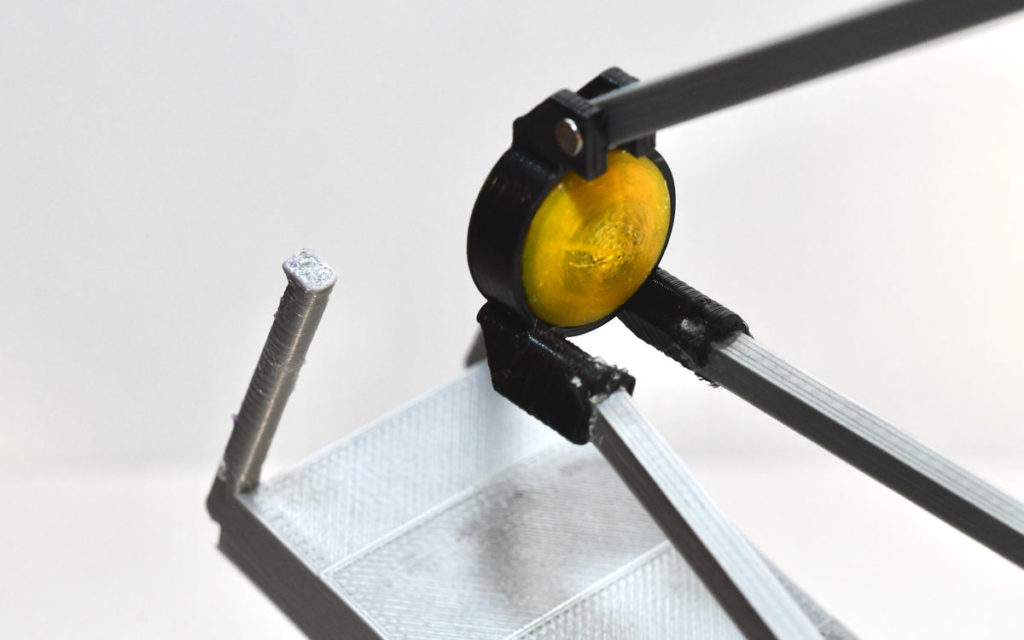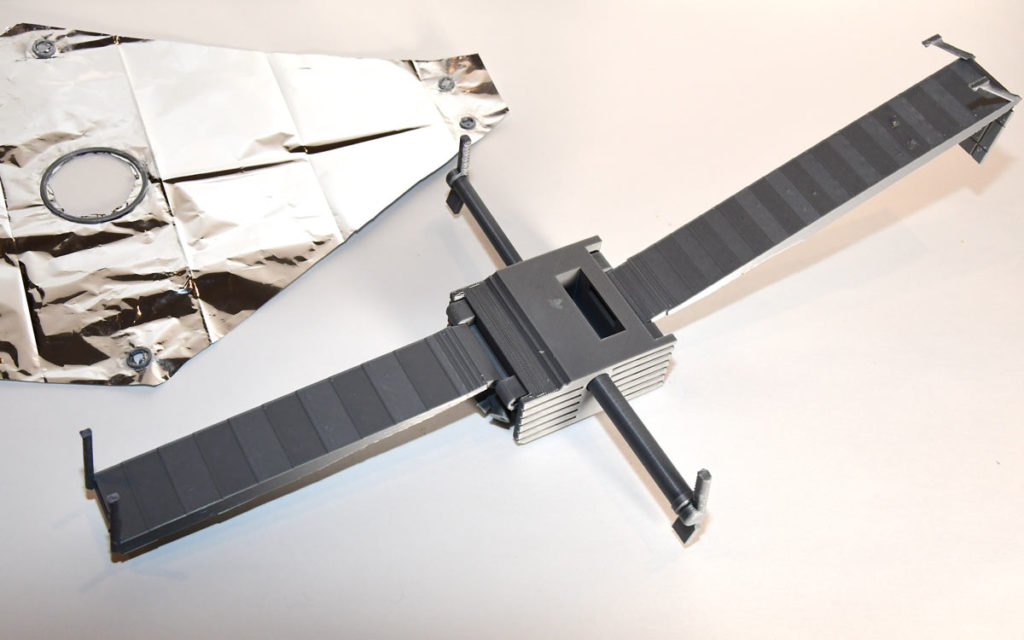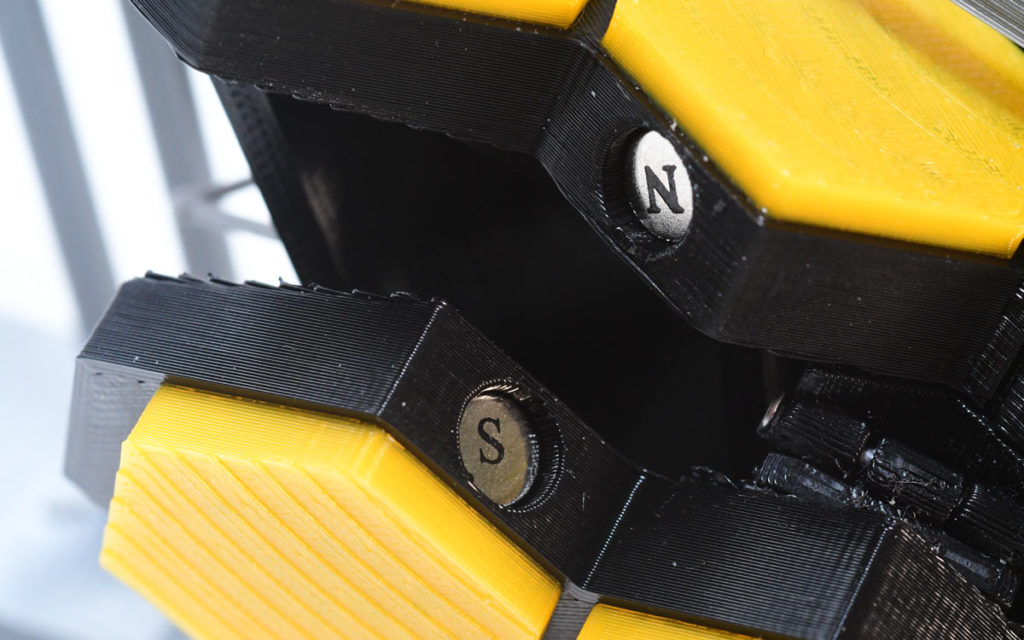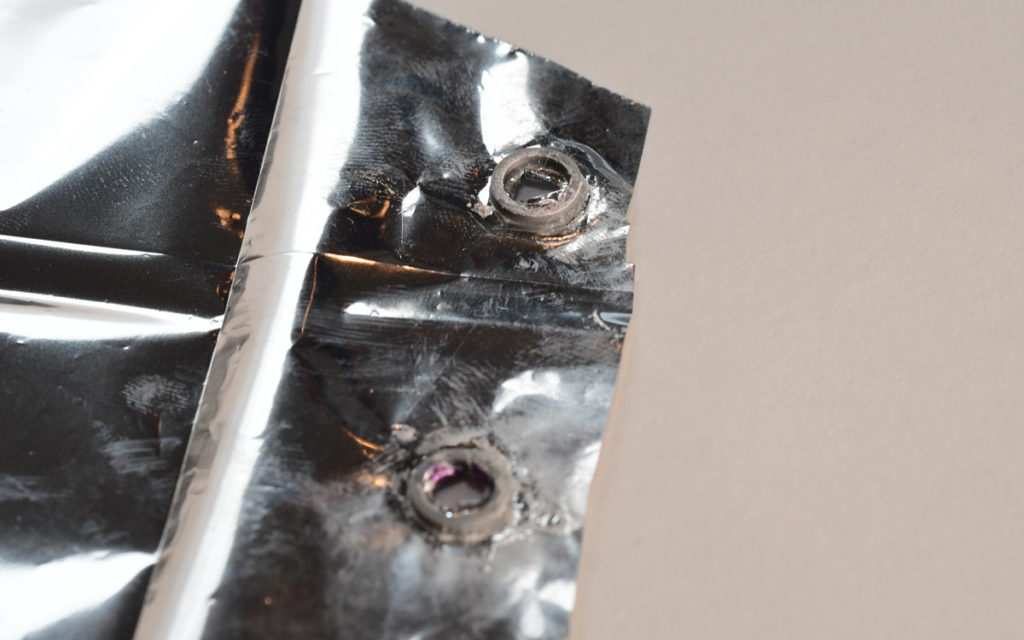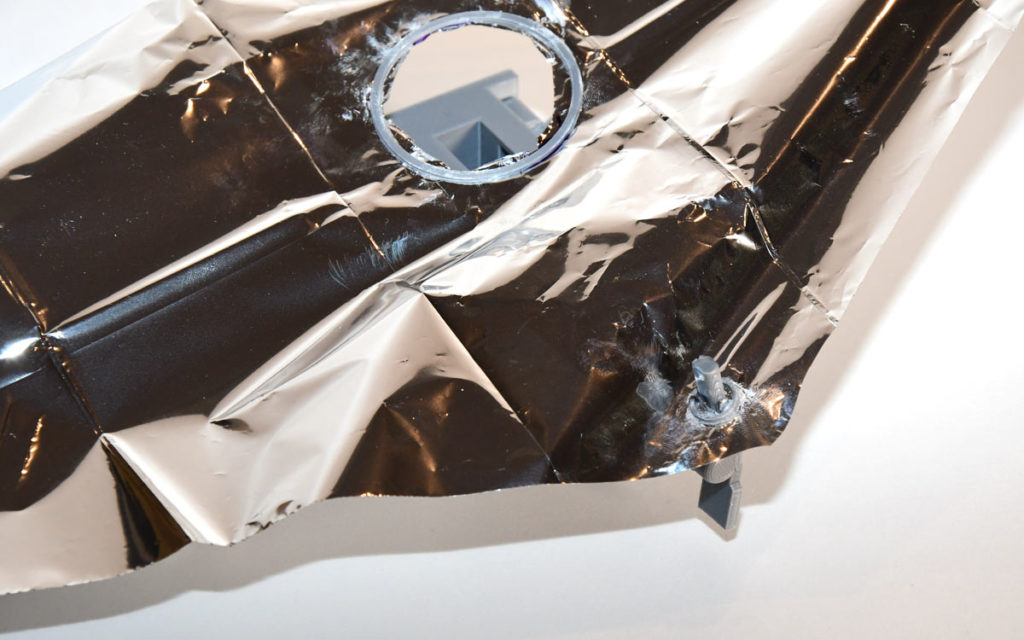
When I look to begin making a new model, I look for two things. First, the subject matter must be something I’m excited to learn about. For me the design process is more about learning about the objects and topics in detail than the final product. Second, the project needs to present a design challenge I haven’t encountered before: the need to design a new mechanism, a complex shape I don’t know how to model, or a new tool or technique I haven’t tried.

The James Webb Space Telescope (JWST) was a perfect combination of these factors. I have always been a huge space fan and had been following the progress of JWST for years. As the launch approached, I thought about designing a new JWST model but hesitated, because I had already designed a smaller one as part of my Space Telescope Chess Set several years ago. This changed after the launch when I began to follow the telescope deployment steps on NASA’s “Where is Webb” webpage. I’m a huge Transformers fan, and what I was watching was pretty much a real live transformer — I had to figure out how to make a model that transformed in the same way!
Once I know what I want to build, my design process begins with initial research and a design phase in my head. I found resources containing schematics of the telescope and detailed videos and websites describing the deployment steps. As I learned about these steps, I started to think about different mechanisms and ways that I could accomplish the needed movements. My hour-long commute to work was filled with me iterating different methods to create new hinges, move the secondary mirror assembly, and deploy the sunshield. Once I had a fairly solid idea of how the model could work, I then started my CAD design phase.







The model was done! The final model measures approximately 40cm×22cm×18cm and can perform deployment steps including:
- Solar Panel
- Antenna
- Fore and Aft Sunshield Pallets
- Left and Right Sunshield Boom Extensions
- Aft Momentum Flap
- Tower Deployment
- Secondary Mirror
- Radiator Panel
- Primary Mirror Wings
I have now posted the model on several 3D printing model sites, with instructions for assembling it. I enjoy contributing to the 3D printing community since I have learned so much from the open source resources that so many people create. Therefore, if I post a model, I want it to be accessible and freely available to as many makers as possible to build, modify, and share. This is especially true of the educational models that I designed for myself and other educators to use with their students. I hope that anyone who builds the JWST model will learn as much as I did in the process and that maybe it will encourage others to explore science and engineering.
Since this model requires several non-3D parts and assembly steps that were not simple to explain, I was hesitant to put it out there at first. It has been quite a while since I’ve shared any models online as my designs have begun to include laser cutting and post processing steps that are fairly complex. After receiving so much positive feedback from those that I shared the model with in person, I eventually decided to share it online, which turned out to be a great decision. I am now starting to rethink posting some of my unreleased models such as my camera puzzle box, watch charging stands, and Perseverance/Sky Crane lamp. You can keep up with my designs on Thingiverse.



